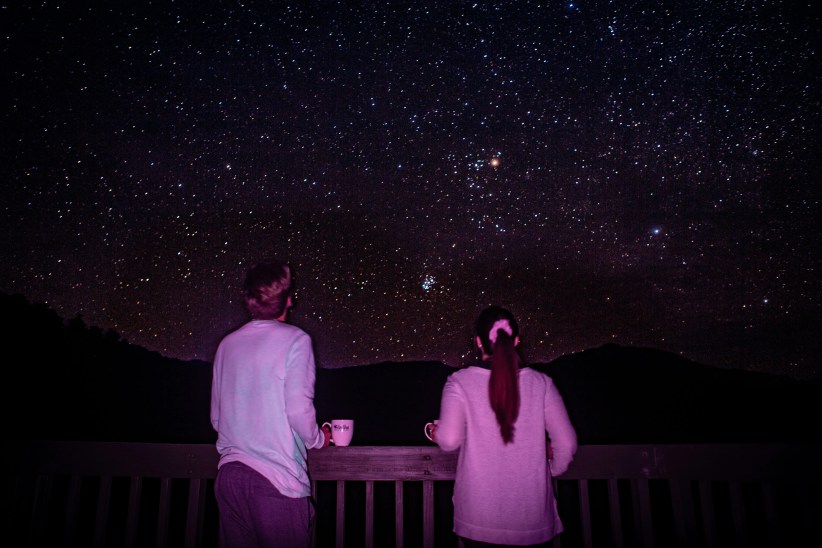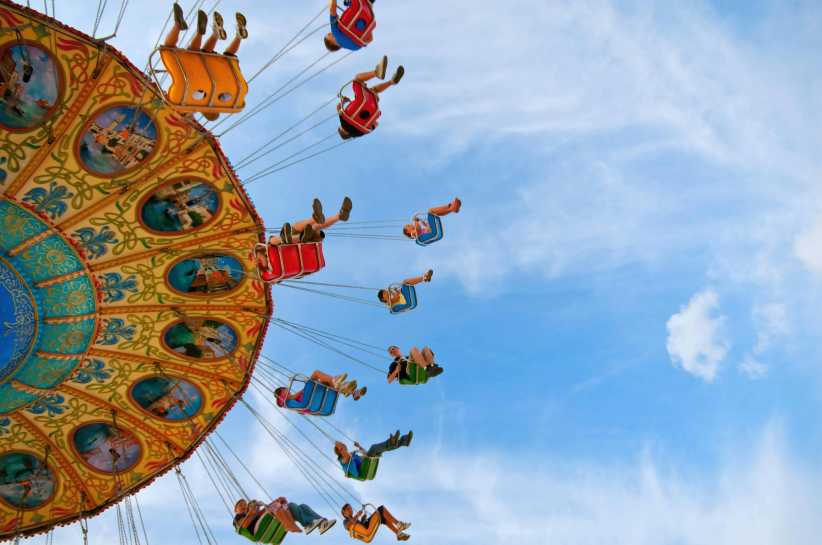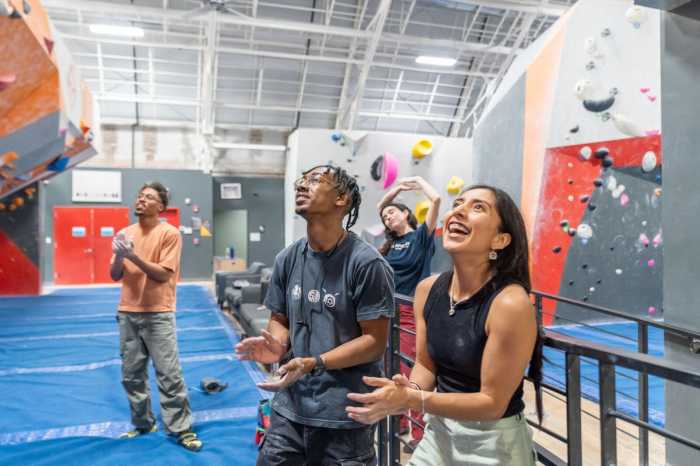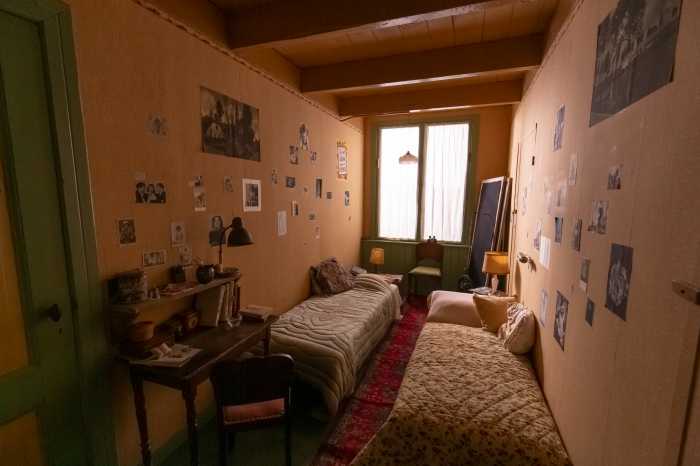
Stargazing: Beginner Tips and Places to Stargaze in New York
New York City is the city that never sleeps, and while there’s nothing quite like seeing the city’s bright and beautiful skyline, it does hide the one natural source of light: stars. Stargazing is a great way to appreciate the night sky in a new way, especially if you have little aspiring astronomers in the family.
Getting started with stargazing might seem intimidating at first, especially if you don’t know much about stars, constellations or space. But you don’t need to be an expert to enjoy looking at the night sky! Stargazing can be a fun activity for the whole family, regardless of your level of expertise.
Here are some tips for stargazing for beginners, plus some spots in and around New York City to stargaze as a family!
Psst…Check out A Parent’s Guide to Exploring Moynihan Train Hall with Kids
Stargazing Tips for Beginners
Check What’s In the Sky
Get an idea of what the sky’s going to look like before heading out for a stargazing session.
It’s best to stargaze before a full moon, so look at the moon phase when you’re picking a date. You’ll also see different constellations depending on what time of year and time of night you go out, so look at a star map to get an idea of what you’ll be seeing.
While you’re at it, be sure to check the weather before heading out. Nothing ruins a night of stargazing like a sky full of clouds.
Download an App
A stargazing app can be helpful as you and your family scan the sky. Many of them cost money, but there are plenty of free or cheap options if you’re more of a casual stargazer. Some good options for beginners include SkyView or Star Rover.
Expensive Equipment Not Required
Having an expensive telescope is not a requirement for stargazing, especially if you’re just starting out. An old pair of binoculars will do the trick. They’ll be more than enough to magnify the night sky and allow you to see things you may not have been able to see before.
Get to know the night sky before taking the plunge and buying a telescope.
If you decide later on that you want to take your stargazing to the next level, do some research when deciding what telescope is best for you and your family.
Dress and Pack Accordingly
Set yourself up for success by dressing for the weather when going out for a night of stargazing. New York nights can get chilly, so be prepared to layer up with sweaters, cold gear, winter coats, scarves, hats, gloves and anything else you typically need to stay warm.
Bring a few blankets for extra warmth and to give yourself some protection from the ground if you choose to lie down to look at the stars.
Find an Astronomy Club
There are a ton of clubs for amateur astronomers, which are a great resource if you’re looking to get into stargazing yourself. For example, the New York-based Amateur Astronomers Association offers classes, lectures and public observation sessions throughout the year.
“This is a great way to learn and receive guidance in your first steps toward discovering the universe,” says Cyril Dupuis – passionate stargazer and founder at Vaonis. “It also provides an opportunity to observe the night sky through high-quality telescopes before deciding to invest in one.”
Joining a group like this is a great way to get more involved with stargazing alongside a new community.
You can also follow astronomers on social networking sites. Often, they’ll post about cosmic events coming up or where and how you can see celestial points of interest.
Stargazing Spots in New York
Believe it or not, there are some great stargazing spots in New York City. They’re not great for seeing the deepest objects in space, but they’re good for seeing a few bright spots in the sky.
“In general, the key is to find areas with minimal exposure to bright city lights, a clear horizon, especially toward the south and of course accessibility late at night or overnight,” Dupuis continues. “With these criteria in mind, places like Central Park, Floyd Bennett Field, Great Kills Park, etc. could be suitable options.”
If you’re looking to see more in the sky, we’ve also included some spots outside of the city.
Pupin Physics Laboratories
Home of the physics and astronomy departments at Columbia University, Pupin Hall hosts public outreach astronomy events for the whole family. Drop in for rooftop stargazing every other Friday during the academic year.
Check out their Family Astro events, hosted three times a year and targeted towards children with families ages 6 through 12. Be sure to check out their website for the latest news and events.
The High Line
Take a closer look at the stars at the High Line in Manhattan. Join the Amateur Astronomers Association every Tuesday at dusk to learn about what’s in the sky that night.
The program is free and open to visitors of all ages but only runs Afrom pril through October, so put this on your spring to-do list!
Vanderbilt Museum & Planetarium
The Charles and Helen Reichert Planetarium at the Vanderbilt Museum on Long Island offers planetarium shows throughout the week and public stargazing hours in the Observatory on Friday evenings.
Their website also offers a comprehensive list of astronomy resources for amateur astronomers of all levels.
Walkway Over the Hudson
This historic site is the world’s longest elevated pedestrian bridge and a great place to stargaze. Watch the stars shine against the Hudson River and take in the breathtaking views.
Montauk Point State Park
This state park on Long Island is far enough away from the bright lights of the city to give you a perfect sky for stargazing.
If you go at the right time of year, you can even get a glimpse of the Milky Way’s core, which is visible from the Northern Hemisphere around February every year. Gaze up at the stars amid views of the Atlantic where it meets the Block Island Sound.
Harriman State Park
One of the closest state parks to New York City, Harriman State Park in Rockland and Orange counties, is full of great locations for stargazing. It’s open year-round, so you can always make a trip with your family for some stargazing.
Big Buck Mountain Multiple Use Area
There are no formal trails at Big Buck, but there are 146 acres of land open for primitive camping and exploring. It’s a good choice for stargazing if you and your family are experienced with camping and being outdoors.
Adirondack Mountains
Just a short drive from the city, the Adirondack mountains offer fantastic and clear views of the sky. Ideal for a first time stargazer, many can see the glorious stars that light up the sky due to the low light pollution and high elevation. Mount Jo, Tupper Lake and the Adirondack Sky Center & Observatory are particularly known for their dark skies and stargazing opportunities.
Psst…Check out 7 Great Spots to See Cherry Blossoms on Long Island
























